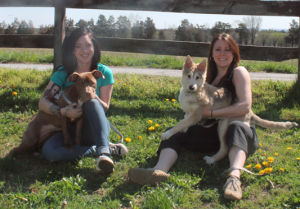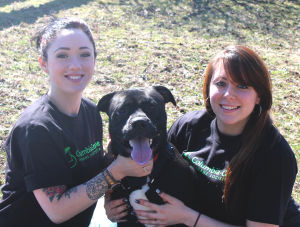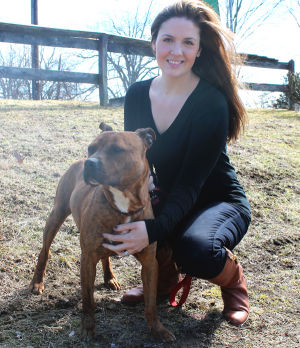It’s a simple case of too much interaction or integration too soon. Let me simplify. The best advice that can be given to a new adoptive family, with one or more pampered tabbies at home, is to isolate the new-kid-on-the-block to his/her own room. That room is complete with food, water, litter pan and toys. This “less is more” approach is also beneficial to a new single cat, easily overwhelmed by what I like to call the “whole house is beyond me” syndrome.
Back to the kitty pack — beginning on day one, the scent glands of the resident cats (along the sides of the head) should be rubbed with your fingers. Those scents should then be massaged over the body of our “apartment” dweller. Conversely, we reverse the procedure, beginning with the new kitty. Though infrequent, it can happen that one of the cats has a defensive (fearful) reaction to the cross-scenting process. If this occurs, wait 48 hours before
starting again.
Another suggestion is to place one drop of cologne on the back of the necks of all the household inhabitants. Our goal is to have the same familiar smells. Our cross-scenting is a precursor to our visual introductions. A successful transition typically takes seven to 10 days. Even if the cat is scheduled for eventual indoor/outdoor activity, this initial protocol should be in place before moving on to step two, in our next column.
Feel free to call us with any questions at 518-828-6044, or visit our website at www.cghs.org. Stop down and see us at 125 Humane Society Road, off Route 66 (about a mile south of the intersection with Route 9H) in Hudson. Our hours are Monday, Tuesday, Thursday, Friday, and Saturday, 11:30 a.m. to 4 p.m., closed on Wednesday and Sunday. The food bank is open to any from the public in need of pet food or for those wishing to donate food anytime during business hours. All of our cats and kittens are “Furrever Free” with all expenses paid. Spay/neuter clinics for cats are $65 male or female, including a rabies vaccination and a 5-in-1 feline distemper combination vaccination. Nail clipping services are available every Saturday from 10 to 11 a.m. at the shelter, no appointment necessary, for a donation of $5 for cats and $10 for dogs.
***
Charlene Marchand is the chairperson of the Columbia-Greene Humane Society/SPCA Board of Directors. She may be contacted by email at [email protected].



 RSS Feed
RSS Feed